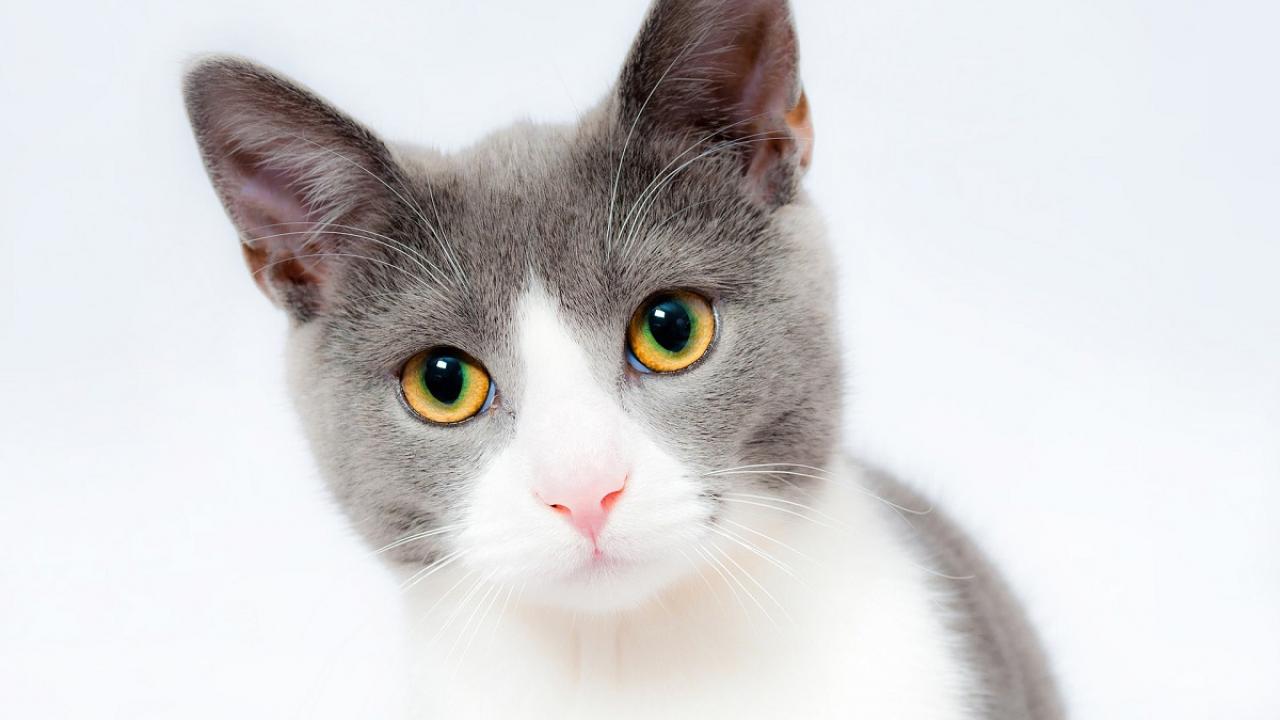
Spaying or Neutering Your Cat
Spaying or Neutering Your Cat
How we can help
Call 530-752-1393 to schedule an appointment with the UC Davis veterinary hospital small animal clinic.
The main reasons for spaying or neutering (castrating) cats include reducing pet overpopulation, lowering hormone-associated health problems, and modifying undesirable behaviors. Spaying or neutering a cat that is not intended for breeding purposes is one way in which you can help insure the health and safety of your pet and their place in your family.
Overpopulation
Each year, thousands of animals are relinquished to animal shelters due to unplanned pregnancies and undesirable behavior. Many of these healthy kittens and cats are euthanized due to a lack of adoptive homes, space and resources. Spaying and neutering cats that are not going to be used for breeding purposes helps to decrease the number of unwanted breedings.
What is spaying?
Spaying is a surgical procedure to remove the female reproductive organs - the ovaries and uterus. For routine spaying, the best age for cats is before puberty. Spaying is considered a routine abdominal operation. The procedure is done with the animal under general anesthesia and consists of a small incision in the abdomen for removal of the ovaries and uterus. Recovery is generally prompt. Most cats can go home the day after surgery and are back to normal within five to seven days.
What are the advantages of spaying?
- Spayed animals no longer feel the need to roam to look for a mate; they stay home and have less chance of being involved in traumatic accidents such as being hit by a car, lower incidence of contracting contagious diseases, and fewer fights.
- Cats spayed before their first heat (six months of age) are virtually assured of not developing mammary cancer, a relatively common disease in unspayed females.
- Spayed cats cannot develop the uterine infection called "pyometra," which occurs commonly among older, unspayed dogs and cats. Pyometra is a life threatening disease.
- Heat cycles: Spayed animals do not go through heat cycles or produce unwanted kittens. “Heat” refers to the time when female cats prepare for mating and pregnancy. Cats have their first heat at 5 to 12 months of age. Heat cycles can start at any time after sexual maturity, but most often occur in the spring and fall. Cats in heat do not usually have swelling or discharge, but they do attract tomcats. They exhibit unusually affectionate rubbing behavior, stretch and extend the back in a reverse arch, and meow loudly and continuously. This behavior may continue for days at a time over a period of weeks if mating does not take place.
Answers to Common Questions
- Spaying will NOT make your cat fat and lazy unless she is overfed.
- It is NOT true that a cat should have one litter before being spayed. This only leads to more unwanted kittens.
- Spaying will NOT change your pet's personality. Cats' personalities do not fully develop until about one year of age. If your pet's personality changes after spaying at an early age, it would have changed without surgery.
What is neutering?
Neutering is a surgical procedure to remove the male reproductive organs - the testes. The procedure is performed with the animal under anesthesia and consists of a small incision in the scrotum for removal of the testes.
What are the advantages of neutering?
- Neutering reduces or eliminates fighting, roaming and spraying in 80-90% of male cats.
- Elevated androgens (testosterone) in non-castrated males can contribute to potentially life threatening diseases.
- Inflammatory and infectious conditions such as orchitis and epididymitis (inflammation of the testis and epididymus), prostatitis (inflammation of the prostate gland) and perianal adenomas (tumors of the anal area) occur more frequently in non-castrated males.
- Perineal hernias are more common in non-castrated animals.
- Testicular cancers such as Sertoli cell tumors, Leydig tumors and seminomas also occur more commonly in uncastrated individuals.
*This article may not be reproduced without the written consent of the UC Davis School of Veterinary Medicine.
